Beynac Castle is perched on top of a 490-foot-high limestone cliff. This was one of the most important and powerful castles in medieval France. And there's a beautiful village at the foot of it, with buildings dating from the 15th century through the 17th century. They're doing quite a bit of restoration now. In the 19th century, many French country villages were dilapidated and abandoned.
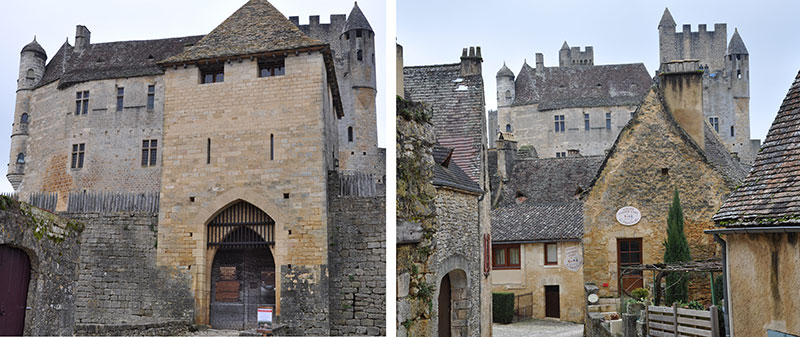
But recent years have seen a great revival in fixing them up. There are some lovely restaurants in the village down below, even though it's the off season we're traveling in early December, these restaurants stay in business with a local clientele. So you know they must have very good quality. You want to head up to the top of the hill to see the castle itself.
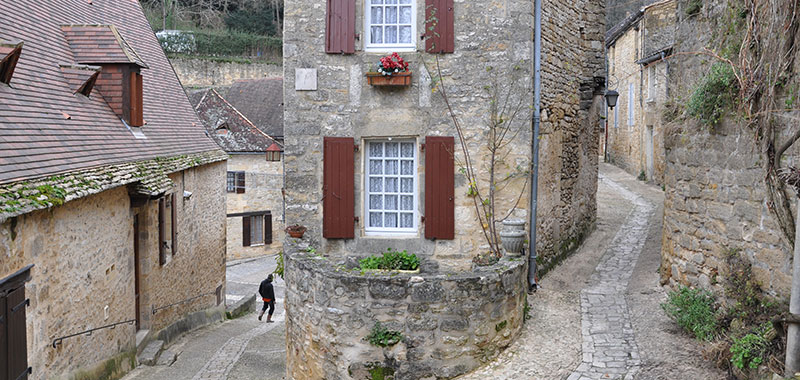
A medieval village surrounds it. And then you can go right up to the castle gates, pay your admission and visit inside Beynac Castle. It was a great stronghold, because during the Hundred Years War, the Dordogne river valley was the border between the French and the English territories.

The castle was primarily under French control, but it did change hands several times, and it was captured by Richard the Lionheart in 1195 for the English. Just across the valley you can see the Château de Castelnaud, where we're going to visit next.

Next we visit another castle briefly occupied by the British. This fortress is yet another stone monster, a giant castle up on the hill, the Chateau de Castelnaud. It was originally built in the early 13th century and burned down and knocked down and rebuilt several times since then. There's a medieval village at the foot of the castle that was part of its defenses, with somewhat of a tortuous series of alleys and little hills.

And then you enter into the castle proper. It's a museum today, privately owned, a listed historic building, and a great experience. This is one of the great defensive fortifications that played an important role in the Hundred Years War. Many castles that you see did not actually go through a lot of warfare. They were fortunate ones. But this castle changed hands many times.

There were ongoing wars between British and French throughout France and in the Dordogne Valley in particular, where you have one castle after another occupied by either the British or the French. This was kind of a border between their two territories. So this castle changed hands between the English and the French, they say, about five or six times during the Hundred Years War.

It was the scene of a lot of heavy fighting. Then later in time, after the French Revolution, in the late 1700s, it was used as a stone quarry, and unfortunately, part of it was ruined. But then it was restored in the 19th and particularly in the mid 20th century. They did a lot of work to bring it back to its former glory as a great castle.
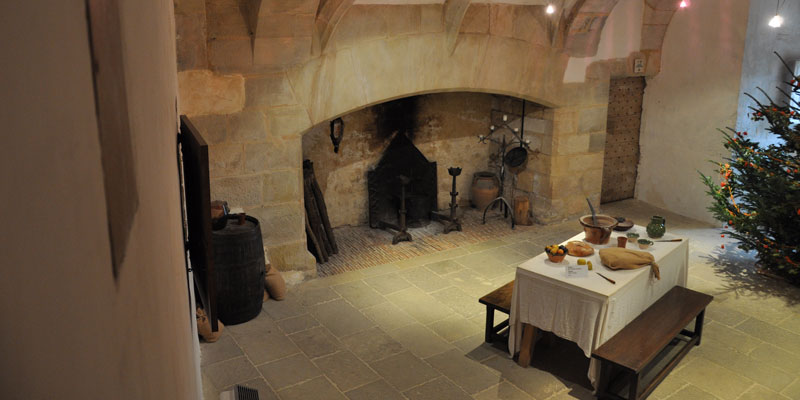
The owners have done a fine job of renovating the interior, and they've created a museum of the Middle Ages, which primarily features medieval weapons and small models and reconstructions of some medieval machinery that was used to help operate the castle. Walking out through the Barbican, this was a fortified gate, and beyond, another fortified tower to protect the flanks of the castle's massive stone construction. A series of trebuchets, giant slings, were used to knock down the stone walls of other castles.

From the castle you get some nice views looking out across the countryside, of view , looking down at the village below. There are still people living in these medieval homes today, maintaining them and keeping them alive with a great spirit.
One could hardly imagine a more scenic river village than La Roque-Gageac. It is nestled right alongside the banks of the Dordogne River. In fact, it was a trading village and a fishing village back in the Middle Ages, when it had a population of 1500 people. Seems like the stone buildings have just grown up organically out of the cliff and up from the ground. There's a 20th century neo-Gothic castle at one end of the village.

The village grew and prospered throughout the 1400s and the 1500s. Today, it's a charming tourist town.
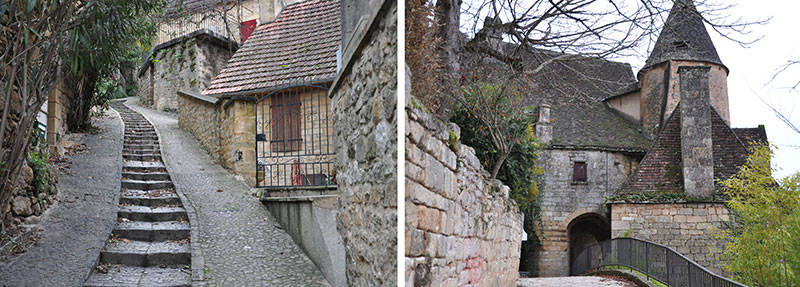
Be sure to walk up the pathway to the little lane that runs through the middle of the village rather than just simply looking at it from the riverfront. Because when you're in the midst of the village, you really get a unique perspective.
These cliff dwellings, called troglodyte forts, were constructed way back, they say around the time of the Viking invasions in the 10th century. Local people were building these to fortify themselves and defend themselves against Viking attacks.

And while we were up at this lofty vantage point, we enjoyed the view looking out across the Dordogne Valley as the sun began to sink behind the hills.
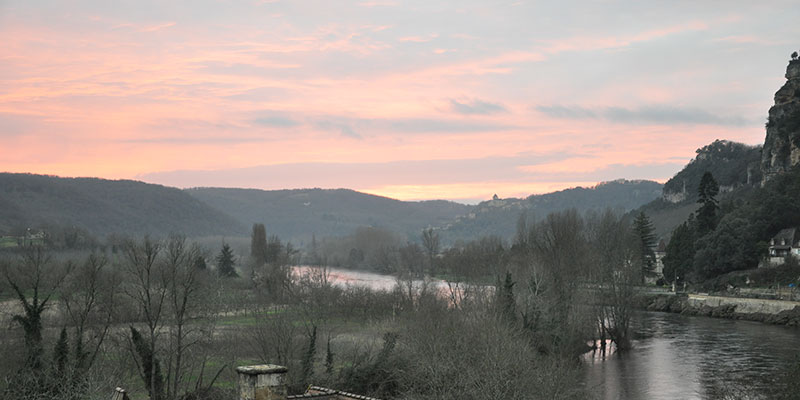
And then we enjoyed the most spectacular sunset of our entire two week visit in France. So this was a great place to linger and just enjoy the view. Looking at these beautiful pink clouds reflected in the Dordogne River down below.

And then the village itself took on another life with the twilight. This is the magical hour when you have that mix of twilight, sunset, streetlights, ambient lighting all come together in this golden glow. And such a spectacular setting for such a light show.